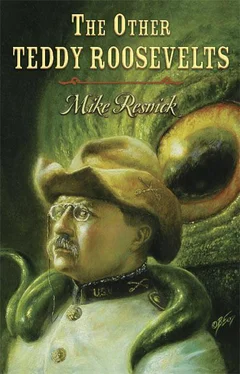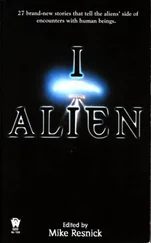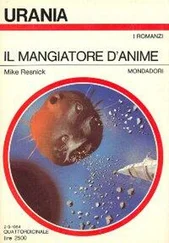Of course I accepted, and of course I chose Teddy Roosevelt. I mean, it was set in 1898, and here a man who was a naturalist, a taxidermist, a politician, a hunter, and military leader who had just led his men in a successful charge up San Juan Hill. Who in all the world was better qualified to face the Martians?
Kevin gave me permission to place it with a magazine before the anthology appeared, and it ran in F&SF .
* * *
Excerpt from the Diary of Theodore Roosevelt (Volume 23):
July 9, 1898: Shot and killed a most unusual beast this afternoon. Letters of inquiry go off tomorrow to the various museums to see which of them would like the mounted specimen once I have finished studying it.
Tropical rain continues unabated. Many of the men are down with influenza, and in the case of poor Westmore, it looks like we shall lose him to pneumonia before the week is out.
Still awaiting orders, now that San Juan Hill and the surrounding countryside is secured. It may well be that we should remain here until we know that the island is totally free from any more of the creatures that I shot this afternoon.
It’s quite late. Just time for a two-mile run and a chapter of Jane Austen, and then off to bed.
* * *
Letter from Theodore Roosevelt to F. C. Selous, July 12, 1898: My Dear Selous:
I had the most remarkable experience this week, one that I feel compelled to share with you.
I had just led my Rough Riders in a victorious campaign in Cuba. We were still stationed there, awaiting orders to return home. With nothing better to do, I spent many happy hours bird-watching, and the event in question occurred late one afternoon when I was making my way through a riverine forest in search of the Long-billed Curlew.
Afternoon had just passed into twilight, and as I made my way through the dense vegetation I had the distinct feeling that I was no longer alone, that an entity at least as large as myself was lurking nearby. I couldn’t imagine what it might be, for to the best of my knowledge the tapir and the jaguar do not inhabit the islands of the Caribbean.
I proceeded more cautiously, and in another twenty yards I came to a halt and found myself facing a thing the size of one of our American grizzlies. The only comparably-sized animal within your experience would probably be the mountain gorilla, but this creature was at least thirty percent larger than the largest of the silverbacks.
The head was round and was totally without a nose! The eyes were large, dark, and quite widely spread. The mouth was V-shaped and lipless and drooled constantly.
It was brown — not the brown of an impala or a koodoo, but rather the slick moist brown of a sea-slug, its body glistening as if greased. The thing had no arms as such, but it did have a number of long, sinewy tentacles, each seemingly the thickness and strength of an elephant’s trunk.
It took one look at me, made a sound that was half-growl and half-roar, and charged. I had no idea of its offensive capabilities, but I didn’t like the look of those tentacles, so I quickly raised my Winchester to my shoulder and fired at almost point-blank range. I could hear the smack! of the bullet as it bounced off the trunk of the beast’s body. The creature continued to approach me, and I hurled myself aside at the last instant, barely avoiding two of its outstretched tentacles.
I rolled as I hit the ground, and fired once more from a prone position, right into the open V of its mouth. This time there was a reaction and a violent one. The thing hooted noisily and began tearing up pieces of the turf, all the while shaking its head vigorously. Within seconds it was literally uprooting large bushes and shredding them as if they were no more than mere tissue paper.
I waited until it was facing in my direction again and put a bullet into its left eye. Again, the reaction was startling: the creature began ripping apart nearby trees and screaming at such a pitch that all the nearby bird life fled in terror.
By that point I must confess that I was looking for some means of retreat, for I know of no animal that could take a rifle bullet in the mouth and another in the eye and still remain not just standing but aggressive and formidable. I trained my rifle on the brute and began backing away.
My movement seemed to have caught its attention, for suddenly it ceased its ravings and turned to face me. Then it began advancing slowly and purposefully — and a moment later it did something that no animal anywhere in the world has ever done: it produced a weapon.
The thing looked like a sword, but when the creature pointed it at me, a beam of light shot out of it, missing me only by inches, and instantly setting the bush beside me ablaze. I jumped in the opposite direction as it fired its sword of heat again, and again the forest combusted in a blinding conflagration.
I turned and raced back the way I had come. After perhaps sixty yards I chanced a look back, and saw that the creature was following me. However, despite its many physical attributes, speed was not to be counted among them. I used that to my advantage, putting enough distance between us so that it lost sight of me. I then jumped into the nearby river, making sure that no water should invade my rifle. Here, at least, I felt safe from the indirect effects of the creature’s heat weapon.
It came down the path some forty seconds later. Rather than shooting it immediately, I let it walk by while I studied it, looking for vulnerable areas. The thing bore no body armour as such, not even the type of body plating that our mutual friend Corbett describes on the Indian rhino, yet its skin seemed impervious to bullets. Its body, which I now could see in its entirety, was almost perfectly spherical except for the head and tentacles, and there were no discernable weak or thin spots where head and tentacles joined the trunk.
Still, I couldn’t let it continue along the path, because sooner or later it would come upon my men, who were totally unprepared for it. I looked for an earhole, could not find one, and with only the back of its head to shoot at felt that I could not do it any damage. So I stood up, waist deep in the water, and yelled at it. It turned toward me, and as it did so I put two more bullets into its left eye.
Its reaction was the same as before but much shorter in duration. Then it regained control of itself, stared balefully at me through both eyes — the good one and the one that had taken three bullets — and began walking toward me, weapon in hand…and therein I thought I saw a way in which I might finally disable it.
I began walking backward in the water, and evidently the creature felt some doubt about the weapon’s accuracy, because it entered the water and came after me. I stood motionless, my sights trained on the sword of heat. When the creature was perhaps thirty yards from me, it came to a halt and raised its weapon — and as it did so, I fired.
The sword of heat flew from the creature’s hand, spraying its deadly light in all directions. Then it fell into the water, its muzzle — if that is the right word, and I very much suspect that it isn’t — pointing at the creature. The water around it began boiling and hissing as steam rose, and the creature screeched once and sank beneath the surface of the river.
It took about five minutes before I felt safe in approaching it — after all, I had no idea how long it could hold its breath — but sure enough, as I had hoped, the beast was dead.
I have never before seen anything like it, and I will be stuffing and mounting this specimen for either the American Museum or the Smithsonian. I’ll send you a copy of my notes, and hopefully a number of photographs taken at various stages of the post mortem examination and the mounting.
Читать дальше










